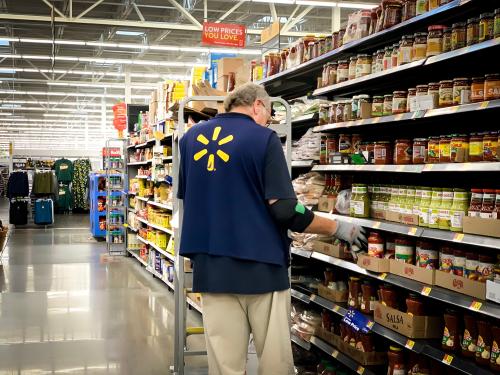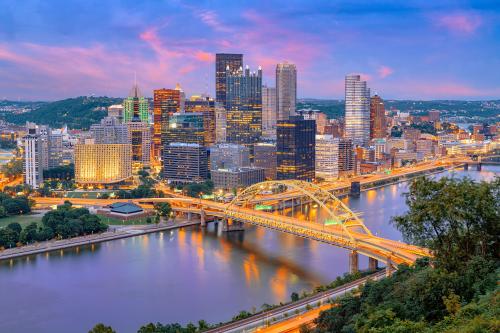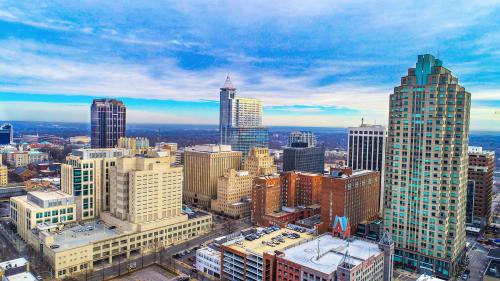The COVID-19 pandemic has inspired an outpouring of gratitude for essential workers, whose critical and often low-paid work has kept the country functioning. Millions of these essential workers have risked their health on the COVID-19 frontline, while thousands have lost their lives.
For months, leaders in Washington have said it is not enough just to praise essential workers—we must also pay them. In the long run, the best way for Congress to do this is to—finally—raise the federal minimum wage to $15 per hour.
As part of the American Rescue Plan, the Biden administration proposed raising the federal minimum wage to $15 per hour, specifically citing the sacrifices of essential workers. But the fate of the proposed increase in the Senate remains unclear; late last night, senators passed an amendment to prohibit a higher minimum wage during a pandemic.
Legislation to raise the federal minimum wage to $15 over several years may still be included in a reconciliation bill. But to become law, it would need to pass legal hurdles and gain the support of at least 50 senators.
Despite possible reluctance in the Senate, increasing the minimum wage is a long-overdue necessity—especially following a pandemic that has cost American workers so much already. Below, we outline the reasons why America’s essential workforce deserves a raise.
Half of Americans in low-wage occupations are essential workers
A $15 per hour federal minimum wage would disproportionately benefit the country’s essential workers. Using our colleagues Adie Tomer and Joseph W. Kane’s essential worker classification and 2018 data from the Bureau of Labor Statistics, we find that essential workers comprised approximately half (47%) of all workers in occupations with a median wage of less than $15 an hour.
In 2018, 47.7 million U.S. workers were in occupations with a median wage of less than $15 per hour. Of these 47.7 million workers, 22.3 million were in occupations considered “essential” per Tomer and Kane’s analysis of Department of Homeland Security guidance.

Today, essential workers likely comprise an even larger share of the low-wage workforce. According to data from Opportunity Insights, unemployment during the pandemic has jumped 21% for low-wage workers earning under $27,000 a year. Most of those job losses have been concentrated among nonessential industries such as hospitality and leisure. Now, among a smaller group of low-wage workers still employed during the pandemic, it is likely that essential workers comprise even more than half of all workers in occupations with a median wage of less than $15 per hour.
Many essential workers struggle to make ends meet
The COVID-19 pandemic has spotlighted the indignity that millions of essential workers face, as they perform jobs vital to the country without earning a wage that allows them to meet their basic expenses. Even as low-wage essential workers perform jobs that allow the rest of us to survive, their meager pay makes it difficult for millions of them to survive.
Yvette Beatty, a home health aide in Philadelphia, is one of them. Beatty cares for some of society’s most vulnerable people during the pandemic, but she struggles to provide for her own family of six. With only her “itty, bitty” pay of $12.75 an hour, she has had to make difficult choices between medicine and food as she struggles to keep up with her bills.
“It’s very hard,” Beatty told us this fall. “Thank God for noodles. We are eating just what we can right now.”
Beatty is not alone. The wages for care workers like her are so low that nearly 20% of them live in poverty, and more than 40% rely on some form of public assistance.
In the grocery sector, meanwhile, a typical cashier makes just $10 to $11 an hour—a wage that would put a family of four below the poverty line.
Lisa Harris, a Kroger cashier outside of Richmond, Va., described the financial hardships her grocery colleagues experience: “I have coworkers who stand all day serving people, and then have to go pay for their own groceries with food stamps.”
Raising the minimum wage would narrow the enormous gap between the value that essential workers bring to society and the extremely low wages they earn in return. When nonessential businesses and employment shut down, it is their work that keeps us fed, safe, healthy, and moving. And long after the health risks of the pandemic subsides, their work will still be essential.
“I think that $15 an hour should be the minimum, and stay there,” Lisa Harris told us last spring. “We are heroes every day, and we deserve to be paid as such. We haven’t gone from unskilled labor to essential personnel. We always were essential personnel.”
Public sentiment and economic research provide strong support for boosting essential worker pay
Before the pandemic, the work of essential workers like Lisa Harris and Yvette Beatty was often overlooked, as well as grossly underpaid. Now, public opinion surveys show that support for a higher minimum wage has grown during the pandemic, including among an increasing number of Republicans. Even in a divided country, an overwhelming majority of Americans support a $15 minimum wage.
This shift in public opinion may reflect society’s gratitude for the sacrifices that low-wage essential workers have disproportionately made on the COVID-19 frontline. Compared to higher-wage workers, only a small fraction of low-wage workers can work from home. Without the benefit of telework, these workers face not only economic precarity but also heightened risk of contracting the virus. Black and brown workers are overrepresented among the nearly 19 million frontline essential workers in occupations with a median wage less than $15 an hour, half of whom are nonwhite. Raising the federal minimum wage would disproportionately benefit these and other workers of color, who too often are denied decent-paying work.

Employers have a clear moral case to raise wages for their essential workers. But without legislation requiring them to do so, most have not. Only a few stand-out retail employers—including Costco, Target, Best Buy, and Amazon—have voluntarily raised their starting wage for frontline employees to $15 an hour. In a report we published last November, we studied pandemic profits and pay at 13 of the biggest retail and grocery stores in the country. In the first three quarters last year, these companies, combined, made an additional $17.7 billion in profit during—and largely because of—the pandemic. Yet few companies shared those windfall profits through sustained hazard pay, and even fewer raised wages above typical starting pay of around $11 an hour.
The benefits of a $15 per hour minimum wage to low-wage and essential workers are enormous. Researchers at the Economic Policy Institute (EPI) estimate that it would raise pay for nearly 32 million workers while reducing government expenditures on public assistance programs by between $13.4 and $31 billion. EPI also found that the majority of the workers who would benefit from a $15 per hour minimum wage are essential and frontline workers. Moreover, a raft of recent research strongly indicates little risk of widespread job losses from an increase to $15 per hour.
A $15 minimum wage is an important recognition of the societal values of essential workers
To essential workers like Sabrina Hopps, finally earning at least $15 an hour has made all the difference. Hopps is a housekeeping supervisor at an acute care facility in Washington, D.C. She lives with her daughter, granddaughter, and son, who is a cancer survivor and has asthma. She described feeling “petrified” as she worked during the pandemic, fearful of bringing home the virus to her family. The low wages she earned added to her stress.
Last year, Hopps was promoted to supervisor. For the first time in more than 30 years, she earns more than $15 per hour.
“It makes me want to cry,” Hopps told us. “I am not stressed anymore. The raise means I am a little better able to pay the bulk of the bills and afford the rent on my own if I had to. It allowed me to move. It is peaceful.”
Hopps hopes that the federal minimum wage will be raised for all workers, include lower-paid essential workers like housekeepers, nursing assistants, dietary staff, and maintenance workers that she sees struggling through the pandemic.
“We are the ones who are still out here fighting,” said Hopps. “Raising the minimum wage to $15 can help them have a better life.”







Commentary
Essential workers comprise about half of all workers in low-paid occupations. They deserve a $15 minimum wage.
February 5, 2021